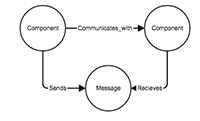Client
A national clothing eCommerce retailer with a large and evolving digital platform.

Challenge
The client’s support and integration engineering teams struggled to access reliable, up-to-date information about the web services underpinning their systems. As the environment evolved rapidly—especially under Agile and continuous delivery practices—traditional documentation was quickly outdated, fragmented, and hard to maintain. This lack of visibility hampered root cause analysis, slowed integration work, and increased support overhead.
Objective
To build a self-updating, real-time knowledge base that captures and reflects the “as-is” state of the entire eCommerce system—including infrastructure, applications, transactions, and source code—so that stakeholders could quickly locate answers to common technical questions and reduce support latency.
Solution
We designed and delivered the Automated Enterprise Knowledge Base (AEKB2)—a dynamic documentation system built on a property graph model, using Neo4J and a code-first ingestion strategy. AEKB2 continuously harvested telemetry, transaction traces, and repository metadata to maintain a semantically rich, queryable map of the enterprise system.
Key components included:
- Automated Ingestion Pipelines: Monitors, scanners, and code reflectors extracted structured data (XML/JSON) from Team Foundation Server, Git, dynaTrace, SCOM, and ADDM.
- Property Graph Model: Unified behavioral and structural elements (e.g., hosts, services, classes, transactions) into a semantic knowledge graph.
- ETL & Indexing Engine: Parsed and normalized source data into graph nodes and edges with meaningful relationships.
- Multi-Format Output: Generated HTML documentation, GraphML diagrams, and interactive browser-based visualizations using SigmaJS and AngularJS.
- Code Inventory Interface: Provided developers and support staff with searchable, drillable code documentation and change tracking across hundreds of projects.
Results
- Reduced documentation latency from 3 - 6 weeks to under 1 day for most updates.
- Enabled system-wide visibility for support staff, who could now trace application dependencies, navigate from systems to classes, and view infrastructure maps on demand.
- Created a scalable foundation for real-time technical documentation, with integration into versioned build systems and potential extensions into service governance and API analytics.
- Improved onboarding, root cause diagnosis, and integration planning through accessible, self-service views of the evolving architecture.
Technologies Used
- Graph database technologies (e.g., Neo4J) for modeling and querying complex relationships between systems and services.
- Version control systems such as Team Foundation Server and Git for managing source code and tracking changes.
- Application performance monitoring tools (e.g., dynaTrace) to capture real-time system behavior and transaction data.
- System monitoring and infrastructure health tools like System Center Operations Manager (SCOM).
- Automated discovery tools for infrastructure mapping, such as Application Dependency Discovery Manager (ADDM).
- Native XML databases, including eXist-DB, for storing and querying structured documents.
- Code documentation generators, such as VSdocman, for extracting comments and metadata from source code.
- Graph visualization libraries like SigmaJS for rendering interactive network and relationship diagrams.
- Web application frameworks such as AngularJS for building dynamic, browser-based interfaces.
- Structured diagram formats, including GraphML (Graph Markup Language), for representing visual models and relationships.
- Content authoring and publishing tools, such as MadCap Flare, for creating technical documentation and user guides.
Let’s Talk
Need help designing a smarter, more sustainable way to work with information?